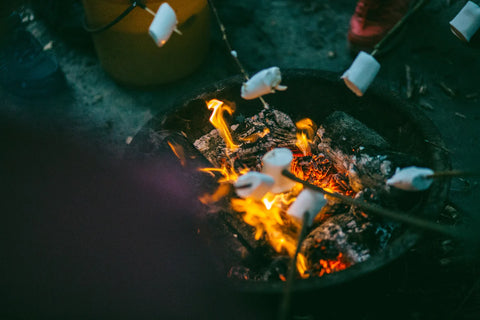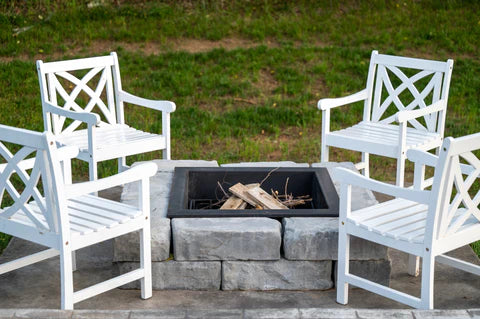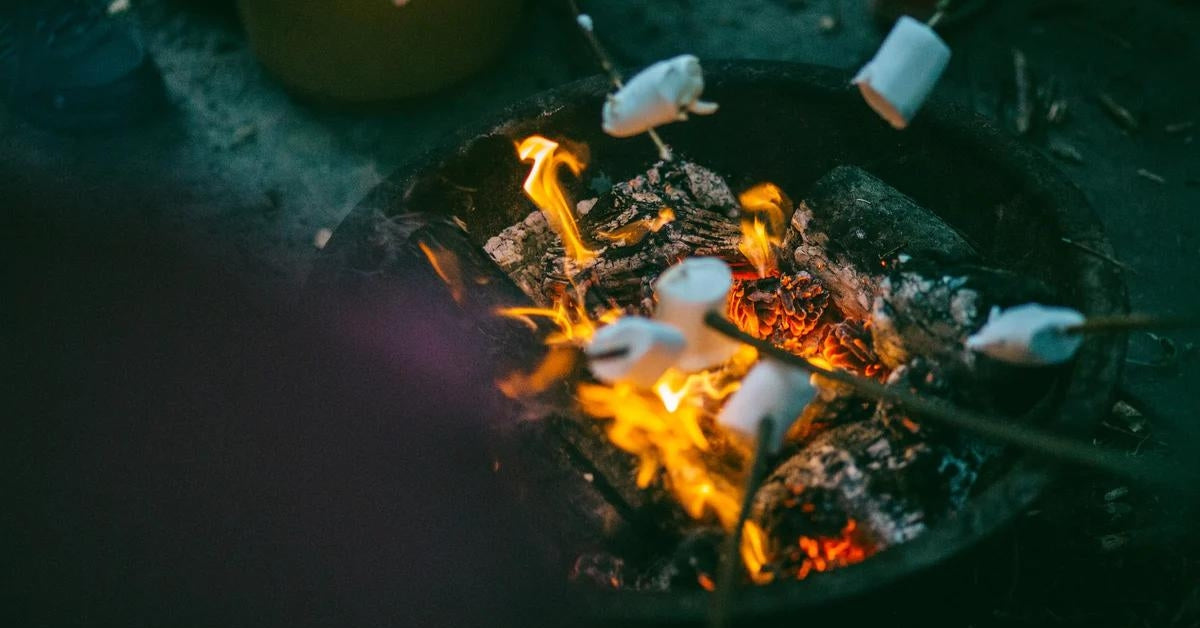For many outdoor enthusiasts, a fire pit is a centerpiece of backyard gatherings and camping trips. However, the enjoyment can quickly diminish when excessive smoke becomes a problem. Not only is it unpleasant, but it can also be a health hazard and a nuisance to neighbors. In this article, we'll explore six straightforward and effective strategies to minimize smoke from your fire pit. Whether you're a seasoned camper or love to relax in your backyard, these tips will ensure a cleaner, more enjoyable fire experience.
What Causes Campfire Smoke?

Campfire smoke is primarily caused by the incomplete combustion of organic materials, such as wood, leaves, and other biomass found in campfires. When a fire burns, it ideally seeks to consume all the fuel (wood) completely, converting it to heat, light, carbon dioxide, and water vapor. However, this complete combustion rarely occurs in typical campfires due to various factors. The presence of moisture in the wood is a significant contributor to smoke. Moisture hinders the wood's ability to burn completely, leading to the production of smoke, which is essentially unburnt particles.
Additionally, the type of wood used plays a role; some woods contain more sap and resin, which tend to produce more smoke. The fire's temperature also affects smoke production; lower temperatures result in less efficient burning. Lastly, limited oxygen supply due to poor airflow in the fire arrangement can cause incomplete combustion, thereby increasing smoke output. Understanding these factors can help in managing and reducing campfire smoke effectively.
1. Maintain a Clean-Fire Pit
Maintaining a clean fire pit is crucial in reducing smoke production. Over time, ash and debris accumulate at the bottom of the pit, which can hinder airflow and lead to smokier fires. Regular cleaning ensures that air can circulate freely, enabling the fire to burn more efficiently. Begin by removing ash and debris after each use, once the pit has cooled down. These fire pit ashes actually have surprising uses in your garden and home.
It's also essential to check for any residue or buildup on the sides of the pit. Use a wire brush to scrape off any soot or tar. This not only helps in minimizing smoke but also extends the life of your fire pit by preventing corrosion.
Additionally, inspect the fire pit for any damages or blockages in air vents, as these can also contribute to excessive smoke production. Ensuring your fire pit is in good condition and clean can significantly enhance your fire experience, making it more enjoyable and environmentally friendly.
2. Properly Arrange Firewood in the Fire Pit
The way firewood is stacked in the fire pit plays a pivotal role in smoke reduction. A loosely stacked arrangement allows air to flow freely, which is essential for a clean and efficient burn. The 'log cabin' or 'teepee' structures are recommended for this purpose. Start by placing larger logs at the bottom and arrange smaller pieces on top, leaving gaps for air to circulate. This method ensures that the fire gets enough oxygen, burns hotter, and produces less smoke. Avoid packing the wood too tightly, as this restricts airflow and leads to incomplete combustion, which is a primary cause of smoke.
Furthermore, placing the wood correctly can also prevent the fire from becoming too large and uncontrollable, which is not only a safety hazard but can also increase smoke production.
3. Opt for Dry, Quality Wood

Using dry, quality wood is essential for reducing smoke from your fire pit. Wood that contains moisture tends to smoke heavily, as the energy from the fire is used to evaporate the water instead of burning the wood cleanly. Seasoned hardwoods like oak, maple, or birch are ideal choices as they burn hotter and cleaner compared to softwoods or unseasoned wood. Hardwoods also tend to have lower sap and resin content, which contributes to less smoke.
To identify dry wood, look for logs that are dark in color, have cracks at the ends, and make a hollow sound when knocked together. The moisture content in the wood should ideally be below 20%. Using a moisture meter can be a helpful tool to check the dryness of your firewood. Remember, the drier the wood, the less smoke it will produce, leading to a more pleasant and eco-friendly fire experience.
4. Correct Storage of Firewood
Proper storage of firewood significantly impacts its dryness and, consequently, the amount of smoke produced. Store your wood off the ground in a dry, covered area to prevent it from absorbing moisture from the ground and the elements. A firewood rack or shed can be ideal for this purpose. Ensure there is enough space between the logs for air to circulate, which aids in keeping the wood dry.
Additionally, cover the top of the woodpile with a tarp or woodshed to protect it from rain and snow. However, leave the sides open to allow air to flow and prevent mold growth. Properly stored wood dries faster and remains dry, ensuring it burns efficiently with minimal smoke when used in your fire pit.
5. Avoid Overloading the Fire and Using Inappropriate Fuel

Overloading your fire pit with too much wood or using inappropriate fuel can lead to excessive smoke. When too much fuel is added, it reduces the amount of oxygen available for combustion, causing the fire to smolder and produce more smoke. Add wood gradually, maintaining a manageable fire size. It's also crucial to use the right kind of fuel.
Avoid using green wood, treated lumber, or any materials like plastic or rubber, as these emit harmful chemicals and excessive smoke when burned. Stick to natural, seasoned firewood. If you need to use fire starters, opt for natural options like wax-based cubes or kindling, avoiding petroleum-based products which can increase smoke and release toxic fumes.
6. Consider Using a Smoke-Free Fire Pit
If reducing smoke is a high priority, consider investing in a smoke-free fire pit. These modern fire pits are designed to maximize combustion and minimize smoke. They often feature a double-wall construction that creates a secondary burn, effectively burning off the smoke before it can escape. This technology not only reduces smoke but also increases the heat output.
Smoke-free fire pits come in various styles and fuel types, including wood-burning and gas-powered models. While they can be more expensive than traditional fire pits, the benefits of a smokeless experience, especially in communal or limited-space environments, can be worth the investment. These fire pits are particularly beneficial for those with smoke sensitivities or in areas where smoke could be a nuisance to neighbors.
Additionally, the efficiency of these fire pits means less wood consumption and more complete combustion, making them a more environmentally friendly option. When choosing a smoke-free fire pit, consider factors like size, design, fuel type, and ease of maintenance. A well-chosen smoke-free fire pit can enhance the outdoor experience by providing warmth and ambiance without the annoyance and health concerns associated with smoke.
Conclusion
Adding an outdoor fireplace to your outdoor living area can enhance the ambiance, offer a cozy gathering spot for loved ones and provide comforting warmth. These tips and tricks can significantly reduce the amount of smoke produced by your fire pit. By maintaining a clean pit, properly arranging firewood, using dry, quality wood, storing wood correctly, avoiding overloading the fire, and possibly investing in a smoke-free fire pit, you can enjoy the warmth and ambiance of a fire without the excessive smoke. These practices not only improve the fire-burning experience but also contribute to a healthier environment and better relationships with neighbors who might be affected by smoke. Remember, a little attention to detail can make a substantial difference in the quality of your fire pit sessions.

